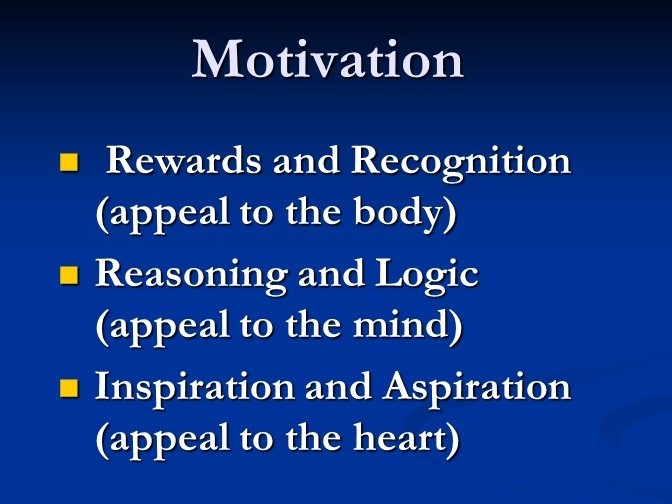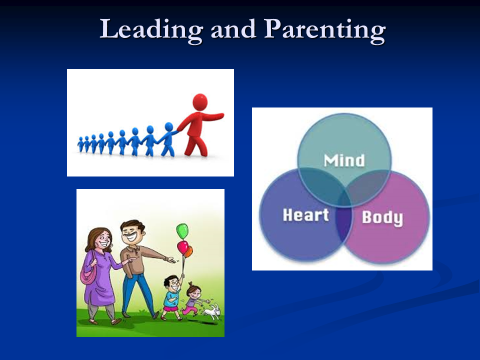
Leading and Parenting
– Musings of Dr. Jamie Hsu, 6.17.2019
I have watched various types of leaders in action over the years. To motivate their employees, some leaders appeal to their employees’ bodily needs, some appeal to their rational minds, and some appeal to their emotions. Similarly, parents use the same techniques to educate and discipline their children. No matter which technique is used, it can always achieve some results, at least in the short run and for specific situations. However, only great leaders and parents know how to use all the techniques in combination to motivate people.
First of all, a leader should always set clear project goals and behavior boundaries for the employees. Rewards are given to keep the people motivated. In some cases, punishment is used or in more extreme cases, obedience is coerced or physically forced. Hopefully your boss is not someone who always uses threats or favors to get you to do your job.
In less labor-intensive and more intellectual jobs, leaders often have to explain the rationale and logic for undertaking certain projects. Once people have a clear understanding, they are more willing to carry out the task and use their brains to figure out the best way to complete it. (at the other extreme, the cult leaders do not want the followers to use your brain)
For higher level jobs or community service work, the motivating factor becomes a matter of appealing to the heart. It is the vision, the results, and the positive impact which provide the inspiration and aspiration for the employees.
You can also see how kids are motivated by all three factors. Kids may be motivated to do homework or household chores to earn credits at school or home, or because they fear punishment. If kids are motivated by engaging their minds, they may spend endless hours on computer games or other hobbies. And if they are motivated by their emotions, they may pursue their dreams of being a ball player, a pop star, or a Ninja Warrior. They will practice day and night, and be totally consumed by their passion.
As a leader and parent, are you utilizing all three motivational techniques to help your employees and children?


領導與教養
-作者 許俊宸博士
-中譯 薛乃綺
多年來,我持續觀察各種類型的領導者。有的對員工訴諸勞動力的需求、有的訴諸於理性需求、也有的則用情感來激勵員工。同樣地,父母也用相同的技巧來教育和訓練孩子們。不論使用哪種技巧,至少在短時間或特定情況下,都可以獲得一定的效果。但只有夠牛逼的的領導者/父母,才懂得如何綜合所有的技巧來激勵他們的員工/孩子,讓他们把 身,腦,心 都投入。。
首先,領導者應該自始至終都要能夠為員工設定明確的專案目標以及行為規範。獎勵甚至是懲罰,都是為了讓對方保持積極性。有個極端的例子,就是古代奴隸們的監工,透過毆打或挨餓的方式逼迫奴隸們服從。但願你的老闆不會總是用威脅或利誘的方式來讓你完成工作,那只不個是用到了你的劳力而已。
在較少勞動密集型或較高知識型工作中,領導者通常需要解釋執行某些項目的理由和邏輯。一旦員工們在腦海中有了清晰的認知,他們會更有意願去執行任務,並且認真地用腦找出更好的方法。
對於更高層次的工作或社區服務的工作,要讓員工能够動心,激勵因素會變得更有驱動力。願景、成果、对人類的正面影響,將會是啟發員工靈感和心願的來源。
在家庭里,你也可以清楚地看到孩子們如何受到這三個 身,腦,心 因素的激勵。孩子們覺得必須要做作業/家務,才能在學校/家裡得到分數。但他們會花費無數個小時在電腦遊戲、或有興趣的嗜好上。如果他們夢想成為一名球員、流行歌手或忍者戰士,那他們會被內心那股激動的情緒所驅使,不分晝夜地練習。
作為領到者/家長,您是否有正利用這三個激勵的技巧,來幫助您的員工/孩子們呢?


